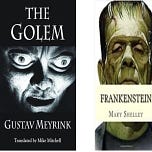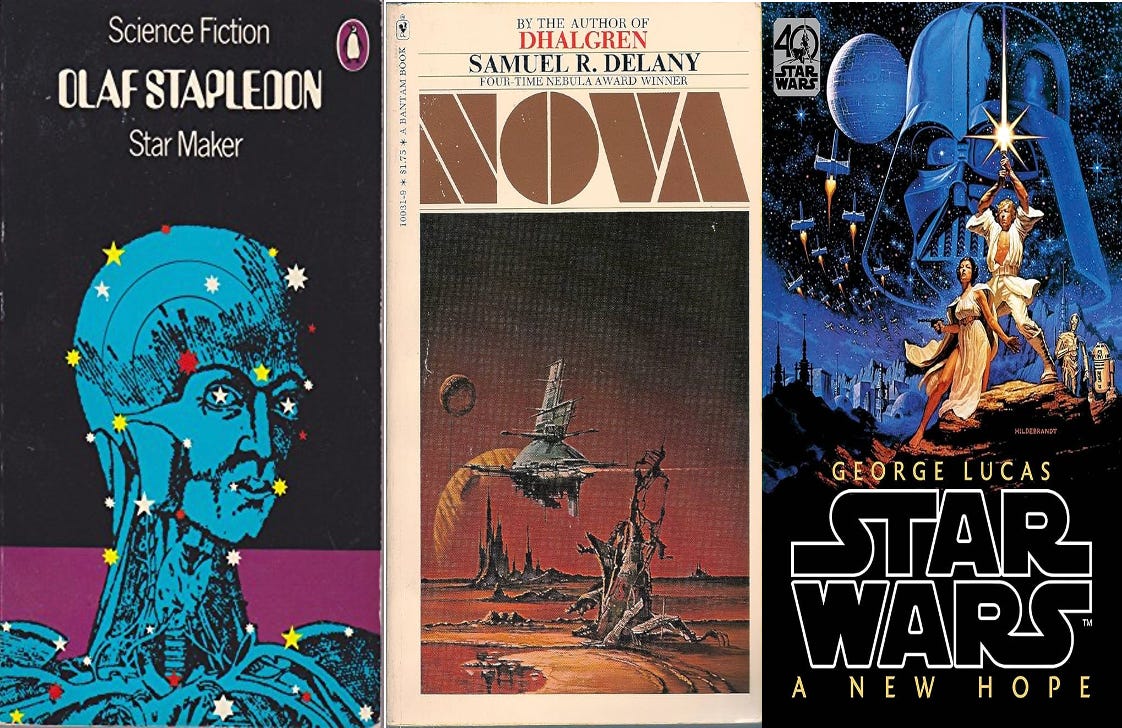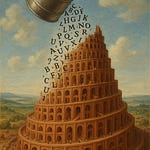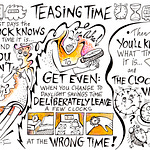NO FUTURE PLEASE
(MUSIC -- audio)
This government shutdown reminds me of an idyllic period in my life, between the ages of 12 and 16. There was absolutely nothing moving in my country, nobody was in a hurry, people moved slowly toward factories and offices where they did nothing all day. I had no idea that the world had been once different, and that people used to rush to their jobs and do something. Everyone had time for me and my friends. Grownups spent time with us, telling us stories and listening to our wild tales. We listened to them chatting idly on benches by the fountain in the square, or waiting in line in front of closed shops. The tram going up hill moved slow enough to grab on to it and ride it to the ends of town.
At school, our bored teachers barely penetrated our daydreaming, startling the class only when they snapped shut a fly between the pages of the ratty manual they read from. The state of things was, “they pretend to pay us and we pretend to work,” but even that pretense was dropped and wore out. We didn’t know who paid who for what, but didn’t really care. After the compulsory optimism of stalinist five-year plans, people were happy to eat corn cakes and potatoes, roll cigarettes from corn husks and drink homemade wine. Every day was autumn grey. I loved the pace, the boredom, the attention, the peace. Nobody strived, it was a fine lente rhythm that made me the happiest brat. I didn’t know what paper money was, but getting a coin here and there made me feel unspeakably rich.
If I needed a doctor, my mother the photographer made a lazy journey on a barely moving puffing train, to a village where she somehow got a chicken in exchange for pretending to take some farmer’s picture. The chicken went to the doctor and my measles went away. I had time to read all the books I could find. There weren’t many, but I often had to squint at the cheap paperbacks to just read their titles in our spare public library.
When I got to be sixteen, the world started speeding up. There was suddenly a newspaper stand. People woke up to work so they could get ahead of everybody else. It was downhill faster and faster from then on. There was sport and Olympics, illustrated magazines and quotas. Things got so fast and demanding I eventually ended up in the fastest country in the world, in America, where the time hands of clocks moved like a dog with rabies.
I returned to my blissful youth briefly during the Covid pandemic of the early 21st century, but it wasn’t the same thing. People missed the hustle and bustle and they couldn’t sit still for a moment. The solitude and fear made them hallucinate. There was no leisure and peace in this forced quarantine. It was, if anything, the prelude to something worse, the coming of brutal marching orders from men who thrived on fear and peoples’ separation from one another. Nobody stopped to listen to children. On the contrary, they were made to move faster and faster to catch up with machines.
It was only now, for one moment, that work seemed to have stopped. It happened at the beginning of fall, in the gray days that resembled those of my childhood. But it isn’t the same: the clock hands will start moving again and we will be made to march, schnell schnell, into the rapids of the merciless future.The future we’ll never see is an interesting place. The future we might see, will be from the stands. We will watch it go by faster and faster as we recede. When we come to a stop, it will be a blur, a speeding ball of tumbleweed.
(MUSIC)
Artists peer at the future through the lens of their time and language. For a time the future was human immortality. The Golem, Dracula and Frankenstein Jr. skipped death to live despondently forever. The only immortals before them were gods who never died because, with exceptions, they were never born. The human-based immortals of writers were punished for appropriating the future, a metaphysical sin half-based on science. The human body was being dissected and resurrected.
The next generation looked at inequity in a social future, the place of many people on earth. Some, like Ignacy Witkiewicz, saw a world of robotic Fordians manning assembly lines faster and faster to produce bowers for do-nothing Murtibingians to meditate in. Fritz Lang in the movie Metropolis saw masses of human ants working for their owners. George Orwell foresaw language twisted by propaganda to survey peoples’ inner lives to serve a ruling class. Others, Harlan Ellison and Margaret Atwood, to name two, examined the future of silenced masses’ interiors. Psychology was the foundation of these futures.
When psychology became reality, artists started moving people to other planets. Olaf Stapleton, Samuel Delaney, Isaac Asimov, Star Trek, and George Lucas, who lived in the reality of their predecessors, felt obliged to save humanity in outer space.
For the entirety of human-produced futures, art kept up with science. That is until science realized that artists were vampires who fed on science to move people out of the way of reality. At this point, science appropriated languages and images to itself.
When science moved too fast for humans, it projected its own futures. The imagining of futures by machines made sense to the machines. The future envisioned by humans only interested them to the extent that they could model it on earlier human-based visions, as skeumorphs needed for spectating.
This is where we are -- staring at the future from the stands. Some of us are applauding. Others are booing. But none of us, fans or hecklers, can see, or even imagine, what it might look like.
I tend to side with the hecklers, but now and then a shot of endorphin sends me reeling to the other side.
Witkiewicz committed suicide when he saw that the 19th century’s genteel manners and established rules of war, were overthrown by the proletarians and millionaires of the 20th century. Orwell died when liberal democracies did, in the 20th century. In the 21st, when sci-fi became de facto, Muskians started moving us to Mars, and sci-fi become marketing, the new reality.
There are rogue visions to be found in odd places. I read two books this week, “Gertrude Stein: an Afterlife” and “Deep Future: Creating Technology that Matters“ by Pablos Holman. The two have little in common, except for the shredded umbrella of “nonfiction,” a label that serves only marketers now. What makes these books alt-future interesting is how their subjects saw the future.
Gertrude Stein laid her claim to the future by proposing to rid language of plot, dialogue, description, and grammar. A self-proclaimed genius, she offered to sabotage machines by throwing her sabots into language, just like other modernists, Picasso and Mina Loy, for example, who gave machines a headache by overthrowing realism, along with (they hoped) the reality it tried to render.
In his techno-future, Pablos Holman sees all humanity living in paradise (on earth or on Venus). We have been cured of diseases with medicines invented by machines, we cleaned the air with chemicals devised in laboratories, we are moving on the seas in ships and in the air by airplanes, we extract free energy directly from the sun, and are avid readers and viewers of books and art created by machines.
Where Gertrude Stein and modernism see humans at work messing up the belly of machines, Pablos Holman gives us Jules Verne backed by facts. These are alt-futures. I applaud and I boo. I boo and applaud.















